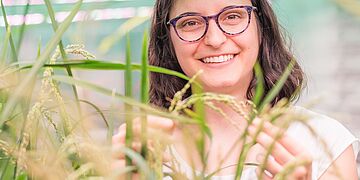When the first SARS-CoV-2 variants made headlines shortly before Christmas last year, the Austrian Agency for Food Safety (AGES) approached Luisa Cochella (Research Institute of Molecular Pathology) and Ulrich Elling (Institute of Molecular Biotechnology of the Austrian Academy of Sciences), who had previously developed SARSeq, for high-throughput detection of SARS-CoV-2 and other viruses using Next Generation Sequencing (NGS). The two researchers were asked to propose innovative methods for routine identification of SARS-CoV-2 variants in large numbers of samples. Within a few weeks, Elling, Cochella, and their team, developed “SARSeq-S-tiling”, a method allowing the sequencing of the Spike gene of thousands of SARS-CoV-2 samples in parallel.
Since mid-January, SARSeq-S-tiling has been delivering 2,300 sequences weekly, contributing around 80 percent of all Austrian sequencing efforts reported to the international database GISAID to date. The detailed protocol for variant sequencing, as well as conclusions from analysis of over 30,000 SARS-CoV-2 sequences from all over Austria, has now been published as a preprint (of a study that has not yet been peer-reviewed) on the service medRxiv.
Unlike conventional whole genome sequencing methods, the new protocol involves only a few pipetting steps, and avoids some of the more cumbersome steps in sequencing library preparation. This establishes a simplified work chain that enables sequence analyses by “next generation sequencing” far below the price of conventional PCR and with a shorter turnaround time. SARS-CoV-2 whole genome sequencing is too expensive for many countries, but SARSeq-S-tiling now provides a low cost and simple alternative.
“As a largely publicly funded basic research institute, we feel obliged to help analyzing the SARS-CoV-2 pandemic. I am therefore proud of our colleagues, who have been showing extraordinary commitment for months,” states Jürgen Knoblich, Scientific Director of IMBA, in support of the institute’s contribution to the Austrian response to the pandemic.
Currently, the scientists are paying particular attention to the delta variant, on which future variants are likely to build. Unlike PCR analyses, which only detect known variants, SARSeq-S-tiling can pick up even undescribed mutations.
“Any further escalation in viral biology requires more stringent measures to control the virus,” says Ulrich Elling, “so we should find and stop more variants before they spread throughout Austria.” Luisa Cochella adds: “This week, for example, we had to draw attention to a double mutant in Delta, which seems to be spreading from Vienna, and which is almost exclusively detected in Austria.”
So SARSeq-S-tiling will be with us for a while, the scientists said. With the current publication, the complete method is available in full detail to laboratories around the world. With it, Elling and Cochella hope to make a contribution to slowing down the pandemic - and not just observing it.
Original Preprint
High-throughput Mutational Surveillance of the SARS-CoV-2 Spike Gene.
Ezgi Özkan, Marcus Martin Strobl, Maria Novatchkova, Ramesh Yelagandula, Tanino Guiseppe Albanese, Petr Triska, Lukas Endler, Thomas Penz, Timothej Patocka, Vera Felsenstein, Alexander Vogt, Ido Tamir, Tamara Seitz, Manuela Födinger, Ralf Herwig, Alexander Indra, Daniela Schmid, Christoph Bock, Andreas Bergthaler, Alexander Stark, Franz Allerberger, Ulrich Elling, Luisa Cochella.
doi: https://doi.org/10.1101/2021.07.22.21259587



